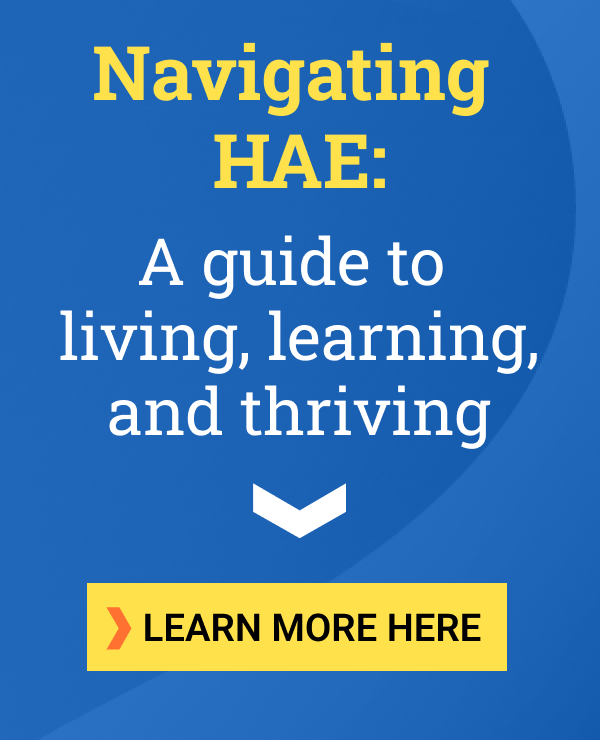HAE attacks in adults fall with long-term use of Orladeyo: Phase 3 trial
Patients in Japan on 150 mg dose go for mean of 68.4 days without swelling

Long-term daily treatment with Orladeyo (berotralstat) effectively reduced swelling attacks and improved patient-reported outcomes in Japanese adults with hereditary angioedema (HAE), according to data from a Phase 3 clinical trial.
Findings were detailed in the study, “Berotralstat for long-term prophylaxis of hereditary angioedema in Japan: Parts 2 and 3 of the randomized APeX-J Phase III trial,” published in the World Allergy Organization Journal.
The sudden swelling attacks that mark HAE are driven by the overproduction of a pro-inflammatory signaling molecule called bradykinin, a process that is controlled by the enzyme kallikrein.
Orladeyo is an oral medication that blocks the activity of kallikrein with the aim of lowering bradykinin production and preventing swelling attacks. The therapy is approved in several countries, including the U.S., the U.K., the European Union, and Japan.
Trial assessed Orladeyo’s safety, efficacy in Japanese adults over about 2 years
Data from the Phase 3 and multipart clinical trial called APeX-J (NCT03873116), which enrolled 19 HAE patients ages 12 and older, supported its approval in Japan.
In Part 1 of APeX-J, patients were randomly assigned to one of two daily doses of Orladeyo (110 or 150 mg) or to a placebo for 24 weeks (about six months). In Part 2, Orladeyo-treated patients continued on their assigned dose, while those previously given a placebo were randomized to Orladeyo at its low or high dose for an additional 28 weeks. In Part 3, all those remaining in the study received 150 mg of Orladeyo daily for up to an additional year.
Published data from Part 1 demonstrated that six months of treatment with 150 mg of Orladeyo significantly lowered the occurrence of swelling attacks by 49% compared with a placebo. More than half of these patients saw their attack rates fall by 50%, while those given a placebo experienced no such reductions.
In this study, sponsored by BioCryst Pharmaceuticals, Orladeyo’s developer, researchers in Japan presented results from Parts 2 and 3 of APeX-J, which evaluated the therapy’s long-term safety, tolerability, and effectiveness.
Of the 17 patients who entered Part 2, seven (41.2%) discontinued treatment before week 104 (two years) of treatment. All but one discontinuation (85.7%) occurred during Part 2 or at the one-year mark, primarily due to withdrawn consent. The remaining 10 patients (58.8%) completed study dosing.
Among patients who were on the 150 mg regimen and completed about two years — 26 months — of treatment (the 150 mg group), the mean attack rate dropped by 1.15 attacks per month from baseline (the study’s start), representing a reduction of 84.8%. Across all time points, the median attack rate was one or fewer attacks each month, while at the study’s end, the median attack rate was zero.
Those given both doses of Orladeyo during the study (110 to 150 mg group) had a considerably lower attack rate in the months leading up to the end of the study. Still, it was similar to baseline at the two-year mark.
In the 150 mg group, the percentage of symptom-free days remained stable, at around 90%, throughout the study. The mean duration of symptom-free periods was 68.4 days, with a maximum of 339 days (about 11 months).
In comparison, those in the 110 to 150 mg group saw their symptom-free days rise over time, with the largest increase seen between study Part 2 and 3, which coincided with a move from 110 to 150 mg of Orladeyo taken daily. In Part 3, both groups showed a similar proportion of symptom-free days, at around 90%.
Decline in monthly need for on-demand medications
In both groups, the use of on-demand medication for swelling attacks tended to decline, with reductions being more pronounced in the 150 mg group. By the study’s end, patients who received 150 mg of Orladeyo throughout the trial largely stopped using on-demand medications (a monthly mean of zero doses taken), while those in the 110 to 150 mg group had a mean of 2.1 doses of these medications per month.
Quality of life improved over time in both groups, assessed using the angioedema quality of life questionnaire (AE-QoL), but was more pronounced and rapid in the 150 mg group. Total AE-QoL scores after two years of treatment exceeded the minimal clinically important difference, “indicating that improvements were clinically meaningful,” the researchers noted.
Treatment satisfaction, also measured via a questionnaire, rose with regular Orladeyo treatment in both groups, particularly in the effectiveness and convenience domains and in overall global satisfaction. For questions regarding side effects, mean scores were high at baseline, and despite slight fluctuations during the first year, high scores were maintained across the trial’s two years.
A lower proportion of patients experienced treatment-emergent adverse events during the study’s final two parts than its initial part. During Parts 2 and 3, 14 patients (82.4%) experienced a mild or moderate side effect, with the most common being cold-like symptoms, abdominal pain, bladder infection, the flu, and vertigo. No deaths were reported.
“Altogether, these results are consistent with other [Orladeyo] studies and suggest that [Orladeyo] is a convenient and effective treatment option for long-term prophylaxis in patients with HAE in Japan,” the researchers wrote.








